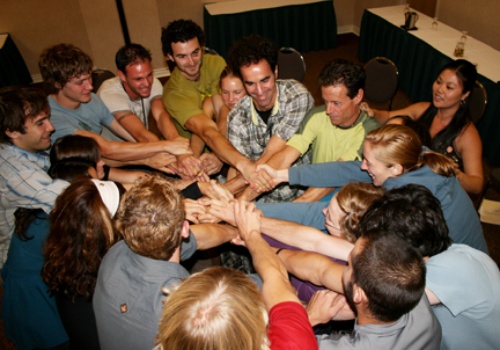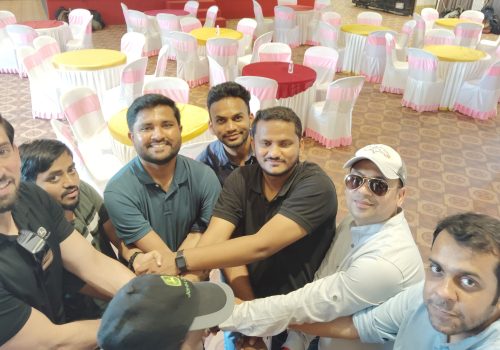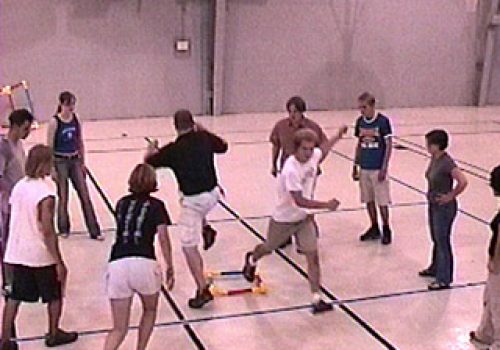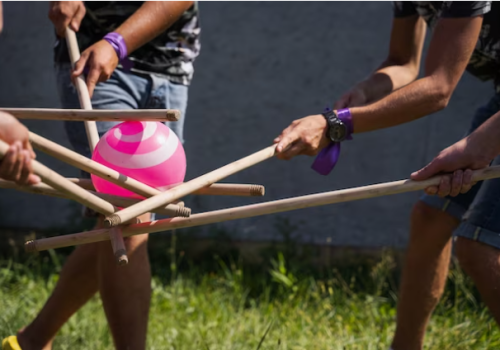Da Vinci bridge- Bridge building
Bridge Building is a dynamic activity that engages participants in a hands-on learning experience designed to foster teamwork, project management, communication, problem-solving, and creativity. As its name suggests, the activity revolves around the construction of actual bridges using limited resources but pretty good wooden material to get an actual feel and hands-on experience of building something great monument. This exercise challenges participants to collaborate effectively, overcome obstacles, and achieve a common goal through experiential learning.
Experiential learning is a pedagogical approach that emphasizes learning through direct experience and reflection. Bridge Building fits seamlessly into this landscape, providing participants with an opportunity to acquire knowledge, skills, and attitudes through practical engagement. Here’s why Bridge Building is a valuable activity within the realm of experiential learning:
Teamwork and Collaboration: The activity demands participants to work collaboratively to design and construct a functional bridge. Participants learn the significance of clear communication, sharing ideas, and delegating tasks, thereby enhancing their teamwork skills.
Problem-solving: As teams face various challenges during ge construction, they must analyze problems, brainstorm solutions, and make informed decisions. This nurtures critical thinking and problem-solving abilities, transferring these skills to real-life situations.
Resource Management: With limited resources at their disposal, participants must prioritize and manage available materials effectively. This mirrors real-world scenarios where resource optimization is vital for success.
Creativity and Innovation: Building a bridge with limited resources requires creative thinking. Participants are encouraged to explore unconventional solutions, fostering innovation and adaptability.
Leadership Development: Within each team, leaders naturally emerge. Bridge Building provides a platform for participants to step into leadership roles, and learn how to guide and motivate their team members.
Risk Management: The exercise introduces controlled risk-taking. Participants learn to assess potential risks, make informed choices, and manage uncertainties—a skill applicable in various personal and professional domains.
Hands-on Learning: Experiential learning engages multiple senses, making the learning process more memorable and impactful. Participants gain practical skills that can be directly transferred to their day-to-day lives.
- Briefing and Objective: The facilitator introduces the activity, emphasizing the importance of teamwork, communication, and problem-solving. The objective is to design and construct a bridge that can support a predetermined weight using provided materials.
- Team Formation: Participants are divided into teams, ideally diverse in terms of skill and backgrounds, to encourage cross-functional collaboration.
- Resource Allocation: Each team is provided with a set of materials, including sticks, strings, tapes, and connectors. The limited resources mirror real-world constraints.
- Planning Phase: Teams are given time to brainstorm ideas, devise a bridge design, and allocate roles based on individual strengths.
- Construction: Teams start building their bridges based on their design plans. They must communicate effectively, troubleshoot problems, and adapt as needed.
- Testing and Evaluation: Once the bridges are constructed, they are tested by adding weight gradually until failure. The objective is to see which bridge can hold the most weight without collapsing.
- Reflection and Debriefing: After testing, teams gather to discuss their experiences, the challenges they faced, the strategies they employed, and the lessons they learned. The facilitator guides participants in connecting their experiences to real-life situations.
- Takeaways and Application: Participants reflect on the skills developed during the activity and discuss how these can be applied to their personal and professional lives.
Bridge Building is an engaging and impactful outbound training activity that embodies the essence of experiential learning. Through the construction of physical bridges, participants build bridges of collaboration, problem-solving, and growth within themselves. This activity reinforces the idea that learning is not confined to textbooks and classrooms; rather, it thrives in the realm of immersive experiences and practical challenges.
Da Vinci bridge
- 10-500
- Low to Moderate
- In-Person
- 30-120 min
- Risk Management
- Resource Management
- Leadership Development
- Creativity and Innovation

Similar Activities
- GROWING BETTER EVERY MINUTE
Get your Business
Right up There
Identifying the missing pieces in the organization or the fading magic of it or perhaps just a lack of acceptance of the same; one of these is enough to get any organization into the act. As it is been rightly said “Acceptance first step towards transformation.” You cannot change if you don’t know where to start and those around you!






